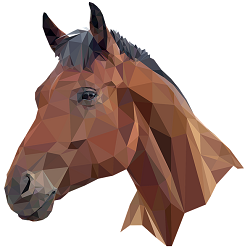
Are you exploring the exciting realm of equestrian sports and interested in understanding the dynamics of show jumping? If you’re either a rider aiming to broaden your skills or a spectator keen to dive deeper into this captivating sport, our extensive beginner’s guide to show jumping will provide you with the crucial insights you need, similar to how jetx game introduces players to new levels of gaming experiences..
Introduction to Show Jumping
Show jumping, one of the three Olympic equestrian sports, offers a captivating blend of speed and precision that appeals to both riders and non-equestrians. Its format is easy to understand, making it a fantastic spectator sport. In this guide, we delve deep into the world of show jumping, covering its history, terminology, equipment, and the thrill it offers.
A Brief History of Show Jumping
Show jumping made its debut as an Olympic sport in 1900, though the format we recognize today evolved over the years. Initially, there were no penalties for knocking down rails, but in 1912, the current format, featuring a 10-12 jump course with penalties for faults, was established. The excitement reaches its peak in the jump-off, where speed and accuracy determine the winner. Variations like “speed rounds” and unique competition formats add to the sport’s diversity.
What Makes Show Jumping Exciting?
Show jumping stands out due to its ever-changing courses and intricately designed fences. Course designers constantly challenge riders with spooky obstacles that require courage and skill to overcome. The real thrill, however, lies in the jump-off. Imagine riding a clear round and then competing against the clock, executing tight turns and strategic planning to minimize your time while ensuring your horse clears each jump flawlessly.
Show Jumping Disciplines
Show jumping encompasses various disciplines, each with its own rules and objectives:
Hunters
Modern hunter classes focus on the horse’s movement and performance over fences. Judges assess the horse’s manners, consistency, and style, scoring them on a scale of 0-100.
Jumpers
Jumping classes prioritize speed and accuracy. Riders must complete the course within a set time while avoiding faults, such as refusing jumps or knocking over rails.
Cross Country
Cross-country jumping occurs outdoors and involves natural obstacles like ditches, streams, and fences. It tests a horse’s endurance and jumping ability.
Three-Day Eventing
This discipline combines dressage, cross-country, and show jumping, evaluating horse and rider in all three phases.
Equitation
Equitation classes assess the rider’s skill and ability to navigate fences with precision and proper form.
Understanding Show Jumping Terminology
Show jumping has a rich lexicon that might confuse newcomers. Let’s clarify some essential terms:
- Faults: Penalty points awarded for knocking down rails or refusing fences. Each fault is worth 4 points.
- Oxers: Fences with two jumps set parallel to each other, making them wider and more challenging.
- Open water: A wide water obstacle that horses must clear without knocking a rail or landing in the water.
- Jump standards: Posts on either side of the jump, holding up the rails. They can be height-adjusted.
- Vertical: A standalone fence with horizontal poles going straight across, known for its vertical height.
- Inside turn: Taking a tighter turn to reach the next jump quickly, often used in jump-offs.
- Chipping: When a horse takes off too close to a jump, resulting in an awkward half stride.
- Long distance: When a horse takes off too early, requiring a wider jump effort.
Equipment and Attire
Both rider and horse require specific gear for show jumping:
For the Rider
- ASTM/SEI approved helmet (black).
- Show jacket (black, navy, hunter green, scarlet, or grey).
- Collared shirt (white or light-colored).
- Stock tie or choker (sometimes integrated into the shirt).
- Breeches (white or fawn).
- Tall boot socks.
- Field boots (traditionally black).
- Gloves (traditionally black).
- Safety vest (optional).
- Spurs (optional).
- Whip (optional).
For the Horse
- Bridle (black or brown).
- Legal bit for competition or a legal bitless bridle.
- Standing or running martingale.
- Jumping saddle.
- Stirrups (preferably safety stirrups).
- Saddle pad.
- Boots or leg protectors (not allowed in the Hunter ring).
- Girth (optional: stud guard).
Getting Started in Show Jumping
Before you dive into jumping, mastering the fundamentals of riding on the flat is crucial. Enroll in lessons with a qualified instructor to learn how to effectively:
- Use your legs to command the horse and maintain balance.
- Balance in the saddle to avoid sitting too heavily or losing balance.
- Handle the reins with precision without causing discomfort to the horse.
- Ride comfortably at walk, trot, and canter, while steering with ease.
Practice half-seat at trot and canter, preparing you for the jumping position required to stay with the horse over fences. Trot and canter poles on the ground further hone your timing, stride counting, and cueing skills.
Choosing the Right Horse
For beginners, riding a seasoned horse, often called a “schoolmaster,” is ideal. These experienced horses can accommodate rider mistakes and boost confidence. However, selecting the right horse is essential, whether you opt for a schoolmaster or a pony for young riders.
Show jumping is a thrilling sport that offers endless opportunities for growth and excitement. As you embark on your journey into the world of show jumping, remember that safety and learning go hand in hand. Equip yourself with the necessary knowledge and gear, find the right horse, and master the basics before taking on the exhilarating world of show jumping.
